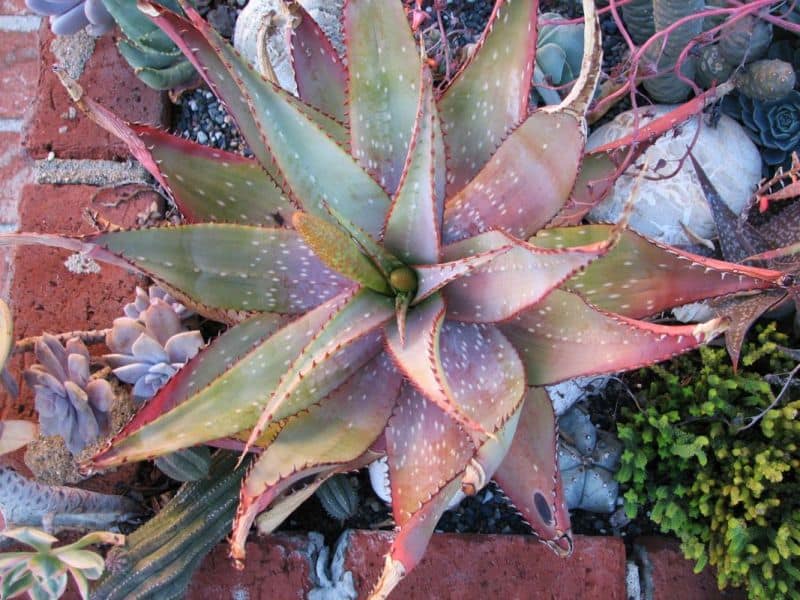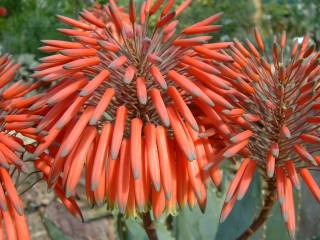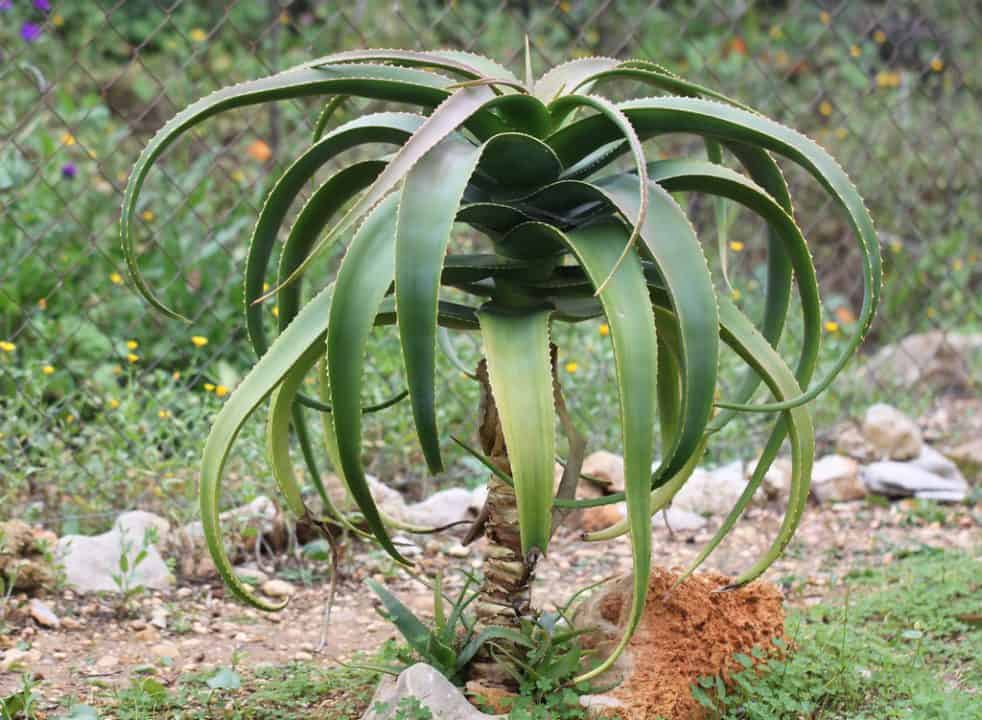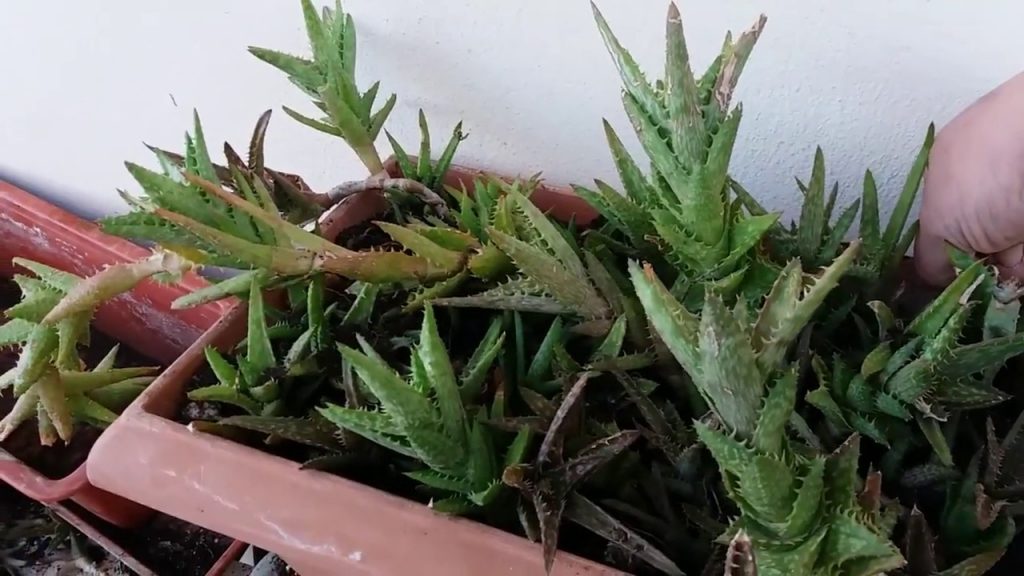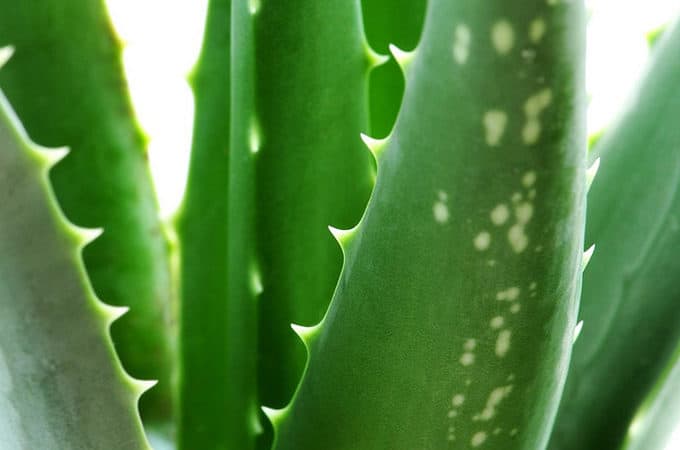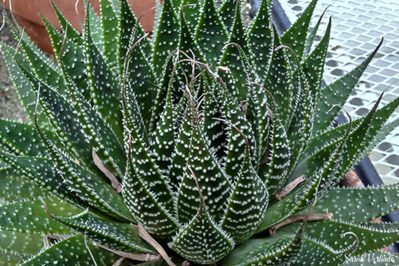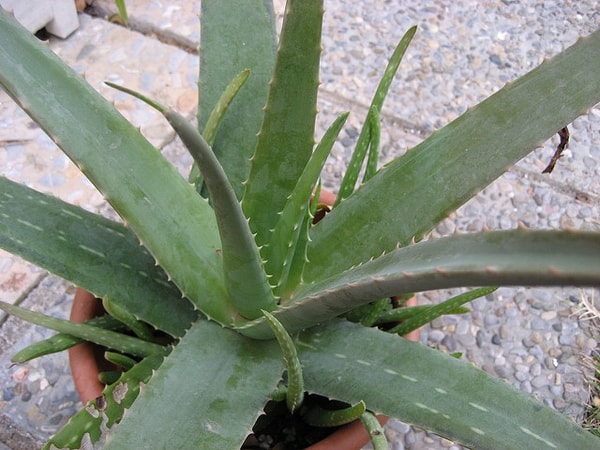Aloe microstigma, also known as Cape Speckled Aloe, is an evergreen succulent native to South Africa that grows between 3 and 15 inches tall, depending on the time of year and other environmental factors.
Easy to grow, Cape Speckled Aloe adapts well to indoor conditions and can be grown both indoors and outdoors year-round in U.S. Department of Agriculture plant hardiness zones 10 and 11.
The plant’s numerous variegated leaves, ranging from lime green to cream-colored with brown or gray accents, make it an attractive addition to succulent collections or simply as a houseplant.
Aloe microstigma is a species of flowering succulent plant in the genus Aloe, indigenous to South Africa’s Cape region. It grows naturally in fynbos habitat and requires little water once established, making it an excellent choice for xeriscaping.
Its thick, fleshy leaves make it one of the most frost-resistant species of Aloe in the world, so even if you live in an area with cold winters, you can still grow Aloe microstigma as a container plant indoors during winter and then move it outdoors to enjoy its vibrant colors in the summertime!
It has an appearance very similar to the far more well-known Aloe vera. However, the two are actually quite different from each other in both appearance and uses.
Origin and distribution
Aloe microstigma are endemic to South Africa, occurring from west of Breede River in the south to Kamiesberg in the north. It is most common on coastal sands, granite rock formations, and clay soils of mountainous regions. Cape speckled aloes can be found at an altitude between 250 and 850 m above sea level.
It is an attractive succulent with spikes of red-orange flowers in spring (September to November).
The plant’s natural range has been reduced due to habitat destruction caused by overgrazing and urban development. The species is currently classified as Near Threatened by IUCN because it has a very small population size that continues to decline. It is estimated that there are fewer than 10,000 mature individuals remaining in its natural range.
Aloe microstigma propagation
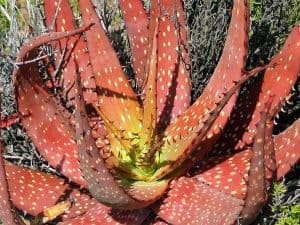
There are three ways you can propagate an Aloe microstigma. They are from leaf cuttings, from seeds, and from offsets. To propagate by leaf cuttings start by removing a branchlet with at least two leaves from an adult plant that has many flowers already.
Remove all but one of these leaves on each branchlet, and then allow them to dry for two or three days in a warm place until they have formed a callus where each cutting was removed from its parent plant. Plant these branchlets into a well-drained soil mix and keep them watered until new growth appears.
Once new growth appears move your newly propagated plants into full sun and reduce watering slightly. You should see your first blooms within about six months after planting.
Propagation from seed is similar to propagation from leaf cuttings except that instead of waiting for a callus to form, you will want to immediately plant your seeds once they are ripe in well-drained soil mixed in full sun. It takes around four years for a seedling to reach flowering size.
Offsets are a great way to quickly increase your stock of Aloe microstigma without having to wait as long as it takes for seeds or cuttings to grow. Simply remove an offset from an adult plant and let it dry out for a few days before planting it in a well-drained soil mix in full sun.
Aloe microstigma care information
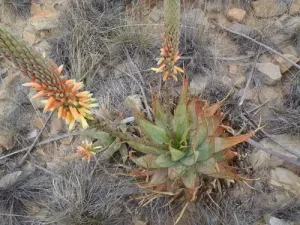
These aloes are tough plants that require a minimum of water and can withstand drought conditions very well. They prefer bright light but will tolerate some shade, especially during hot weather.
Light requirement
Aloe microstigma prefers part-shade to full sun but grows faster in sun. It is best not to grow in hot locations; however, if you do choose to grow it in a very warm climate, it may need extra water during the summer months.
They need at least four hours of direct sunlight per day. If grown indoors, place them near a south-facing window or add additional artificial lighting to simulate at least four hours of sunlight per day year-round.
Soil/potting mix
You’ll need something with good drainage. Cape specked aloes can take dry periods well but they cannot tolerate wet feet. You could try a cactus soil mix or you can create your own by adding one part coarse sand to three parts potting mix, perlite, or pumice.
Avoid using any type of compost in your planting medium as it may contain weed seeds that will germinate and invade your garden. Also, avoid peat moss which is not very nutrient-rich and will make watering difficult later on.
Watering
Water regularly during summer and fall, allowing the soil to dry out between waterings. Reduce watering during winter, but ensure that soil is never allowed to dry out completely. This succulent can survive mild frost, but be careful if your winters are more severe as it may die back.
In particularly cold areas, bring potted plants indoors before the first killing frost in autumn. Mulch aloes heavily over winter months so they do not freeze in place: they take a while to wake up and start growing again after being frozen!
Fertilizer
Aloe microstigma likes to be fertilized several times a year. The best time is when they are actively growing, which is usually during spring or summer. Since many aloes are slow growers and have long life spans, it’s important not to apply too much fertilizer in one sitting.
Fertilize at about half strength and only apply once every other month during active growth periods. Feeding your aloe too much will result in burned, brown leaves!
Temperature
The ideal temperature ranges are 10 to 15°C (50 to 59°F) at night. 15 to 25°C (59 to 77°F) during the day. Can take a short period of frost but should be protected from frost and hard freezes.
Humidity
Aloe microstigma requires a humidity of 30-50% and good drainage. Too much water will cause root rot, but in arid climates, make sure you don’t overwater to compensate for low humidity. High winds will also cause root damage. In warmer areas with high winds, find a shaded spot or provide some shade for your plant to prevent overheating.
Pruning
After flowering, in late summer or early autumn, cut back each stem by a third to a half.
This will encourage new growth for next year. You can also prune after flowering if you’d like to shape your plant, but be sure to leave about five leaves on each stem so that it can still photosynthesize and store food. If you do decide to prune, use sharp tools and sterilize them between cuts.
When to repot
You will want to repot in spring or early summer as soon as new growth has formed at each tip. Spring repotting is recommended because it allows time for plants to become well-established before winter.
When repotting aloes, use a porous soil mix that drains well, and do not add potting mix between plants and root balls; rather, press down on top of roots with your fingers to eliminate air pockets. Keep newly potted aloes dry for at least one week after planting.
Dormancy
Aloe microstigma has a dormancy period of 3-4 months, however, due to higher elevation and harsh climate, dormancy will be naturally more pronounced.
In an environment where temperatures are near freezing and rainfall is scarce, winter rains can prolong dormancy in tropical plants such as Aloe microstigma by up to 5 months!
To encourage earlier emergence from dormancy in plants grown at low elevations, simply hold back on watering and fertilizing until 1 month before the desired emergence.
If you do not wish for your plant to emerge from dormancy wait until early spring or late fall to water it. It may not show signs of emerging but it should still be alive and healthy underneath its protective outer layer.
Flowers & fragrance
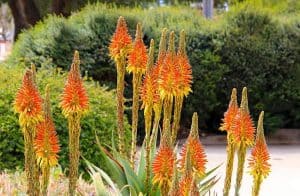
The flowers of Aloe microstigma are small and bright yellow, sometimes tinged with red, and emerge from a tuft of thin wiry grey-green leaves.
Although not particularly showy, they’re exceedingly fragrant; their sweet honey-like scent is emitted even in bright sunlight, providing an excellent way to attract pollinators to your plants. They bloom year-round if grown under glass or within homes.
Growth rate
Aloe microstigma plants are, by nature, slow-growing. Expect Aloe microstigma to grow an average of 1/2 inch per year. It can take a few years before you see blooms or develop a sizable plant. With proper care and attention, your plant may become larger than you anticipated. Be sure to monitor your plant closely for changes in health or growth.
Toxicity
Although it is reported to be potentially toxic, Cape speckled aloe has been administered in various doses to human and animal subjects without adverse effects. However, when Cape speckled aloe is taken orally, it can cause nausea, vomiting, and diarrhea. Also, skin contact can result in irritation or dermatitis.
USDA Hardiness Zones
Aloe microstigma thrives best in USDA hardiness zones 10 and 11. It can survive in zone 9 with extra protection from frost, but it won’t thrive there. However, if you live outside of these regions, you can still grow aloe microstigma as a houseplant.
Pests and diseases
Like most succulents, Aloe microstigma are susceptible to mealy bugs and fungal leaf spots. This can be avoided by keeping them in well-drained soil and minimizing any risks of over-watering. It’s also important to avoid direct exposure to sunlight, and keep plants in a warm area with indirect sunlight, but out of direct sunlight.
If your plant develops a disease or pest infestation, treat it immediately using organic insecticides such as neem oil. Never use synthetic pesticides on your plants.
Conclusion
Aloe microstigma grows in tough conditions and produces fantastic flowers. Cape speckled aloes are very slow-growing, so they make fantastic potted plants. They do very well in areas with a mild climate, growing outside during summer and overwintering indoors during winter.
These plants enjoy good light, but not direct sunlight – they need to be sheltered from direct sunlight to prevent burns and damage to their leaves. Full sun can still be beneficial as it helps produce extra chlorophyll for better absorption of nutrients.
Two studies have shown that Aloe microstigma has a significant effect on lowering blood pressure. A common side effect of taking medications to lower blood pressure is dizziness, but there have been no reported adverse effects in patients treated with Aloe microstigma.
The findings of these two trials suggest that we should look further into using medicinal plants as effective, inexpensive alternatives to pharmaceuticals. This can be especially helpful for people who are suffering from hypertension and cannot afford expensive medication.
